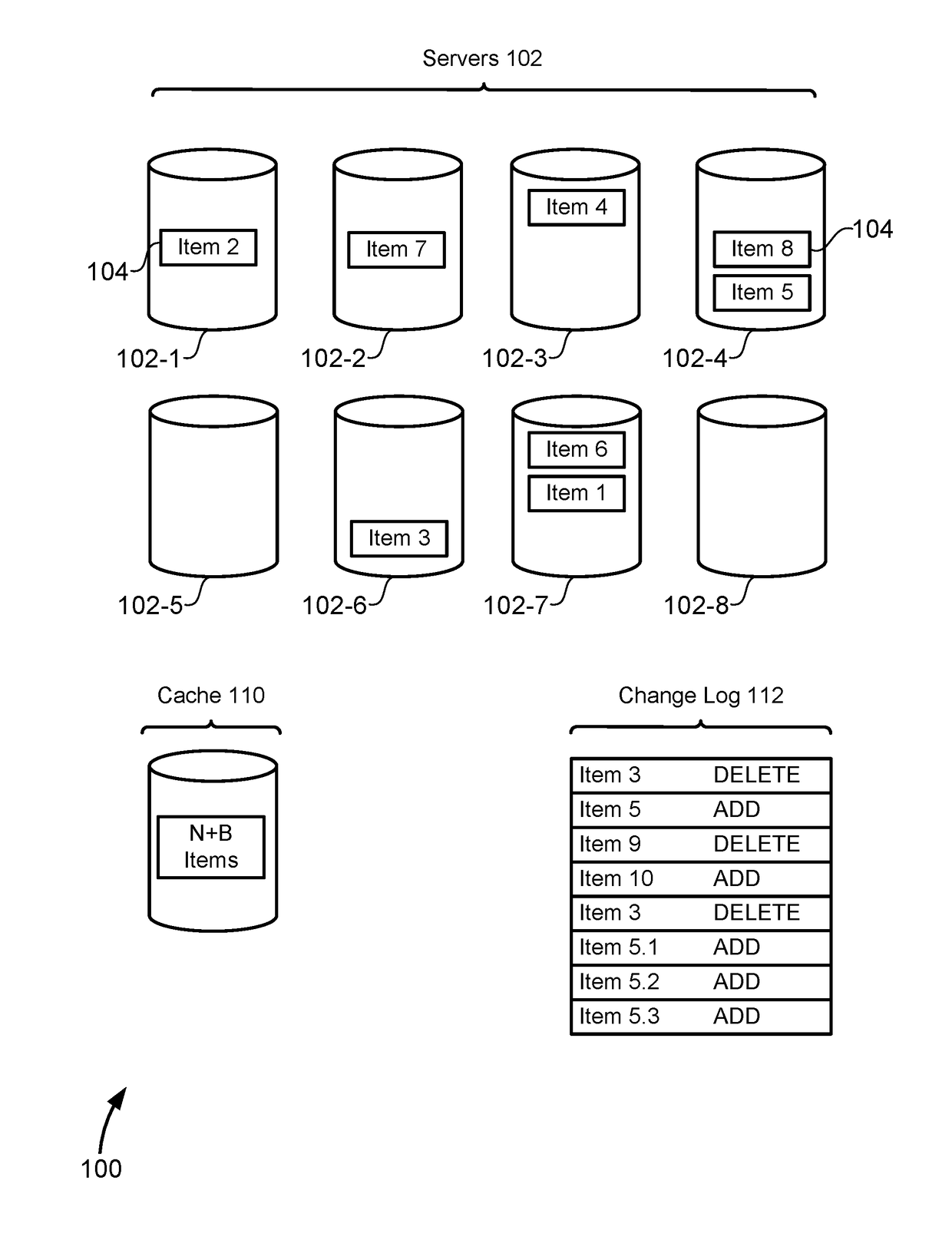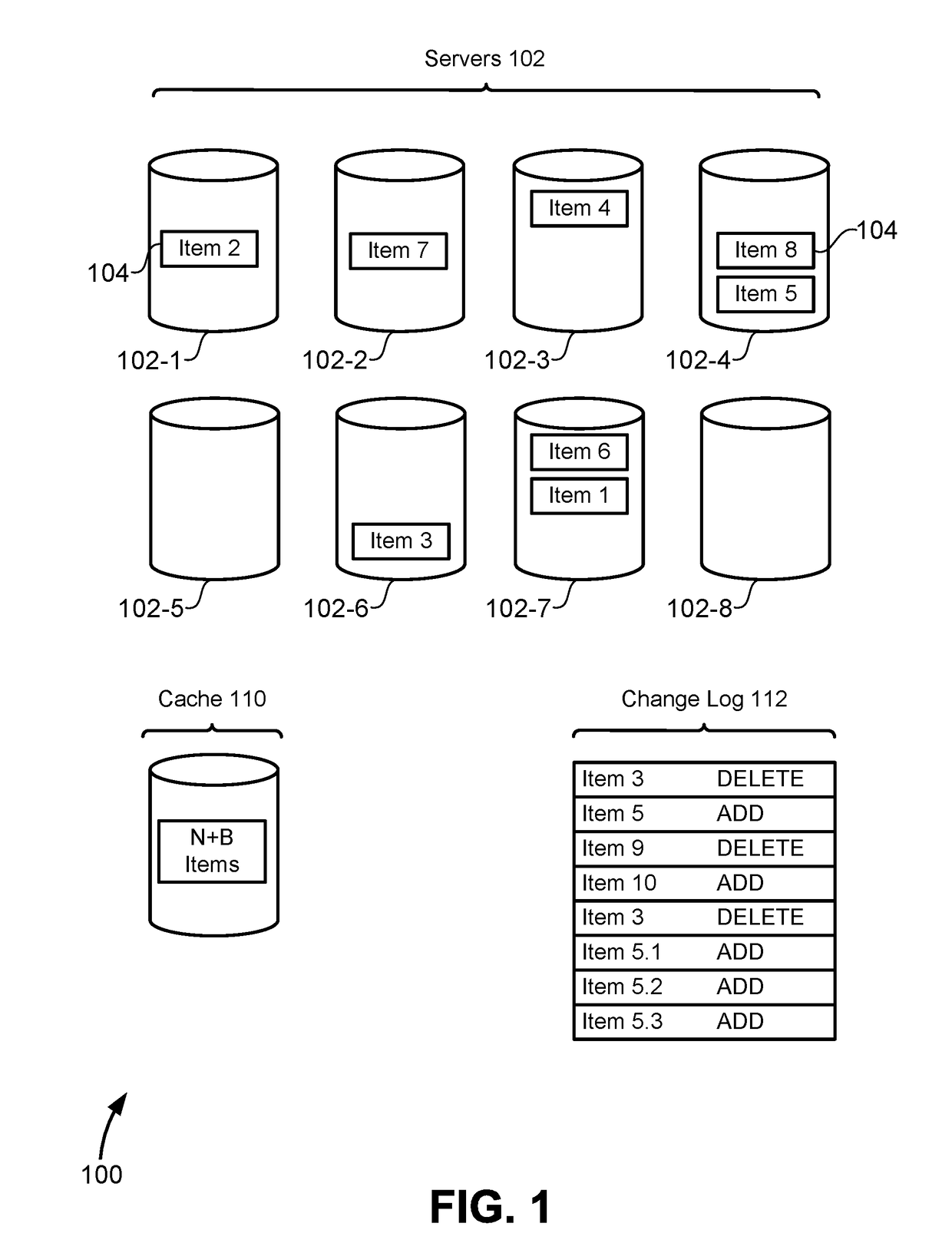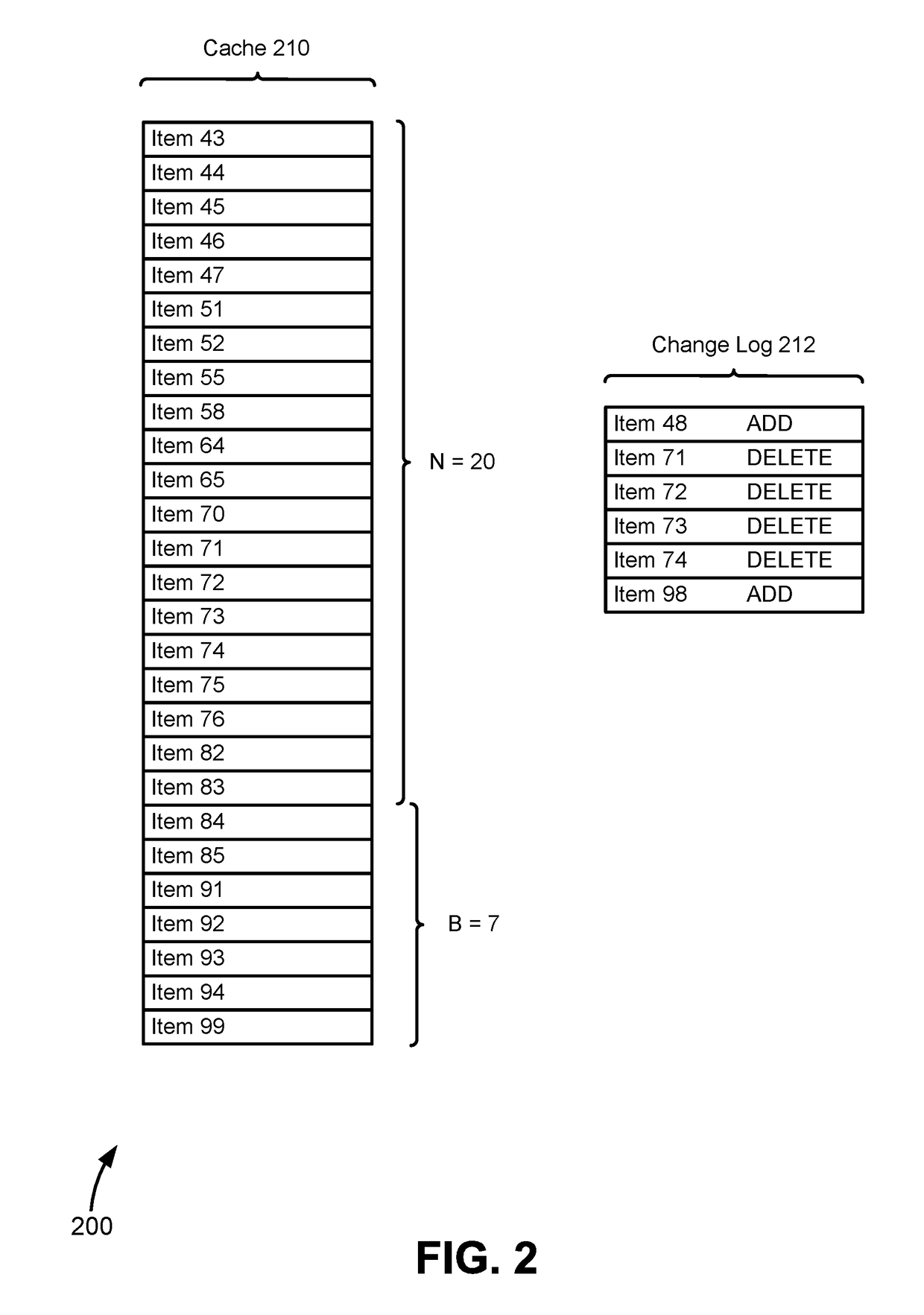Optimization of first set of ordered items and delayed non-duplicated work queue
- Summary
- Abstract
- Description
- Claims
- Application Information
AI Technical Summary
Benefits of technology
Problems solved by technology
Method used
Image
Examples
Embodiment Construction
Optimization of First Set of Ordered Items
[0016]Embodiments of the present disclosure allow efficient retrieval of N items from a distributed database in which data is stored across various servers. In some embodiments, the N items are a set of items that are frequently retrieved from the distributed database, such as a set of descendants in a genealogical database for a commonly researched family line. Furthermore, the N items may have a particular order and the requestor of the items may request that they are returned in that order. An example of a set of ordered items may be a set of lineal descendants in a genealogical database which are generally ordered from most recent to least recent in terms of date of birth. In such scenarios in which the same set of ordered items are frequently requested, for example, on the order of thousands of times per second, it is advantageous to maintain a separate cache containing the items that can easily send the items to the requestor in the pr...
PUM
 Login to View More
Login to View More Abstract
Description
Claims
Application Information
 Login to View More
Login to View More - R&D
- Intellectual Property
- Life Sciences
- Materials
- Tech Scout
- Unparalleled Data Quality
- Higher Quality Content
- 60% Fewer Hallucinations
Browse by: Latest US Patents, China's latest patents, Technical Efficacy Thesaurus, Application Domain, Technology Topic, Popular Technical Reports.
© 2025 PatSnap. All rights reserved.Legal|Privacy policy|Modern Slavery Act Transparency Statement|Sitemap|About US| Contact US: help@patsnap.com



